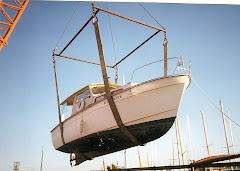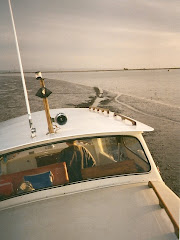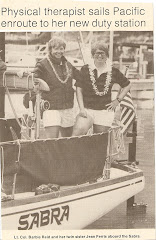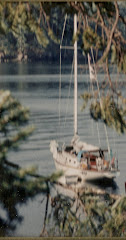22 May 1792, Tuesday- Day 3: Pitt Passage to Anderson Island
 |
| Chart shows Day 3 and Day 4 |
This is a pivotal day, one of interest and creates lots of questions for me. As the chart shows they are departing Pitt Passage and the Captain’s sailing orders were: “follow the continental shore keeping it to starboard.”. Why then would the young Lieutenant take a 90° turn to port and head all the way across Balch Passage to the opposite eastern shore, thus, disobeying his direct orders? When he should have stayed on course to explore Filucy Bay, Drayton Passage and then slip around Devil’s head into Case Inlet and camp at Wednesday Island-Herron Island which would have been about 9nm. By doing what he did, he traveled 21 nm out of his way. The other interesting aspect of this is: when they would have completed following the western continental shore around the sound they would be exploring these same islands on their way out. Which is what they ended up doing. This extra journey was really a waste of time, people’s energy and again, perhaps, in my eyes, an act of disobedience on the part of Lt. Puget. Why would he do this or what would make him do this?
The journals are clear what they did. Lets remember, Captain Vancouver said Lt. Puget was the officer in charge, but he would take orders from Mr. Whidbey. I’m not sure what that really meant, but Whidbey is the navigator and surveyor and the one who is responsible for taking sights and finding the latitude. Perhaps it was, he, who insisted on taking this, diverting, course?
From speculation we return to the journals: With the storm, abated, the explorers were up before dawn and departed on the crested flood tide. However, with severe currents and tides in the narrow Pitt Passage, rowing was extremely difficult. After they free themselves from the southern shore of Pigeon-McNeil Island, Mr. Menzies stated, “ we were amongst a number of islands which rendered the survey & examination more tedious & perplexing --we stood to eastward as, Mr. Whidbey wished to take up his former angular bearing in the main branch which we reached at noon and landed on the small island (Long-Ketron) close to the eastern continental shore about 2 leagues southward of where we quitted the same reach 2 days ago.” With Vancouver in Inland Washington Waters, by Richard Blumenthal. So, it was Mr. Whidbey’s decision to alter the course. However, in the book, Peter Puget by Wing and Newell, they state that it was the Lieutenant’s decision. Here again, Lt. Puget doesn’t say in his journal, Mr Whidbey doesn't write one, but Mr. Menzies lays claim that the decision was Whidbeys. In Sam McKinney’s book, Sailing With Vancouver, he only states that they crossed over to the eastern side.
Upon landing on the northern most shore, with a minus tide on the island, they made dinner. Mr. Whidbey took a bearing at noon, which Lt. Puget stated he did not record.
 |
| Google Images |
In Lt. Manby’s journal he stated he quickly followed an animal trail into the forest. Startled by rustling bushes he miss loaded his prized double barreled gun that the Marquis Townshend had given him. A large brown bear immerged, he fired causing the bear to retreat and his gun to explode. He was now, without gun or bear.
 |
| Long-Ketron Island- Southern Shore |
After departure, a thunder, lightning and rain storm forced them to take refuge in Oro Bay on Anderson island at 1500 hrs and they quickly set the tents. In the evening, 3 canoes from a near by village approached bringing them vegetable-like celery, which Menzies identified as raspberry shoots and salmon. They purchased them along with bearskins.
Was this course deviation to the eastern shore worth it?
1. It cost them a day’s travel, using up precious energy of the oarsmen’s.
2. It duplicated their return trip.
3. The bearing and latitude that Mr. Whidbey, so desperately wanted, was never recorded by Lt Puget.
4. They had to backtrack to Devil’s Head. to intercept their previous day’s course.
5. This was the end of Day 3 and they still had many unknown miles and inlets to explore. Case, Eld, Totten, or Budd Inlet could still reveal the entrance to their holy grail, the Northwest Passage. Would they be able to complete their mission and get back to the HMS Discovery on 27 May 1792, as Captain Vancouver had ordered?
Hindsight holds the wisdom of premature decisions.
Days run: abt 9nm
Total run: 54nm













